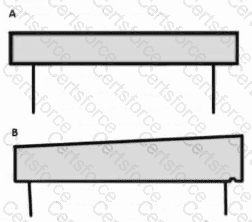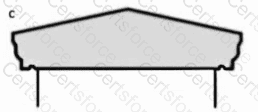Understanding the Problem
The question addresses parapet coping design in a wet climate with a focus on:
Parapet copings protect the top of the parapet wall from water penetration and are designed to shed water away from the wall below.
Analysis of the Options
A. Flat Coping
A flat coping (Option A) has no slope and allows water to pool on the surface.
This pooling increases the likelihood of infiltration and material deterioration over time.
In wet climates, this is poor practice because standing water leads to freeze-thaw damage, staining, and faster degradation.
Maintenance needs are higher.
B. Single-Slope Coping
This coping (Option B) has a slope toward one side, which improves drainage.
However, if sloped toward the inside of the parapet, it increases roof drainage load and risk of water penetration at roof/wall junction.
If sloped toward the outside, water can run down the wall face, which the client specifically wants to avoid.
This design might also stain exterior wall finishes over time.
C. Double-Slope (Pitched) Coping with Drip Edges
This coping (Option C) is pitched toward both sides, with drip edges to break water runoff before it reaches the wall face.
Water is shed away efficiently, and drip grooves prevent capillary action that would pull water back toward the wall.
This is best practice in wet climates and greatly reduces maintenance by preventing staining and wall saturation.
Recommended by NRCA (National Roofing Contractors Association) and referenced in Architectural Graphic Standards for parapet detailing.
NCARB ARE 5.0 PDD Reference:
Content Area: Integration of Building Materials & Systems — Building Envelope Detailing
Source Materials:
Architectural Graphic Standards — Parapet Cap/Coping Details
Building Construction Illustrated by Francis D.K. Ching — Water Management & Flashing
NRCA Roofing Manual — Best Practices for Roof Edge & Parapet Design
Key Principle: Parapet copings in wet climates should always slope to shed water away, incorporate overhangs with drips, and prevent water from cascading down the building face.


Submit